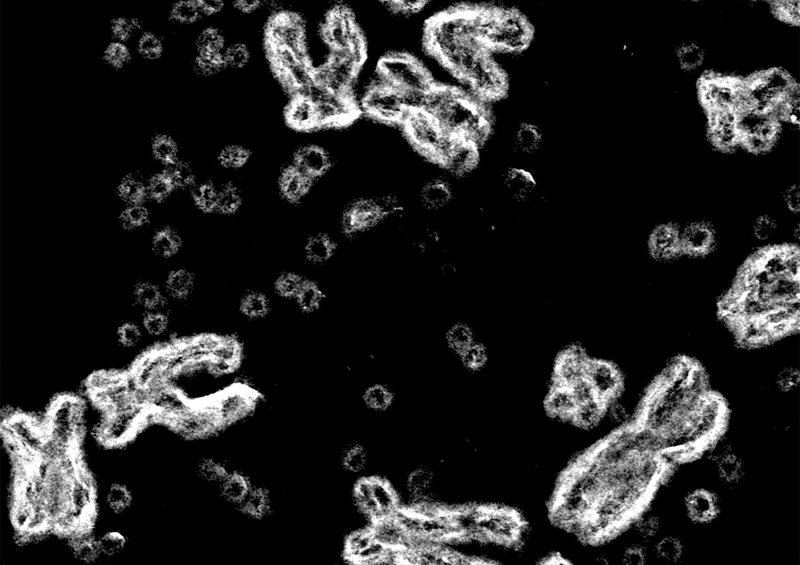Human cells are not supposed to have extra bits of DNA floating around, so [Paul] Mischel described the peculiar substance as extrachromosomal DNA, or ecDNA. He had a hunch that this was not simply some genetic debris and spent the better part of the next decade trying to figure out what that ecDNA was doing in cancer.
The answer turned out to be even weirder than he’d first imagined. Mischel, who is now at the Ludwig Institute for Cancer Research and the University of California San Diego, has since demonstrated that ecDNA carries cancer-promoting genes and that its circular shape fuels aggressive growth streaks and drug resistance. Just last year, he published a photo that clearly shows these circles next to X-shaped chromosomes in a cancer cell.
Today, Mischel is at the center of a small field devoted to studying the circles; it is populated by scientists who, like Mischel, stumbled upon the oddity in the course of their own research. Now that cancer researchers are looking for DNA circles, they see them everywhere.
DNA circles have changed the way Mischel thinks about cancer, and he hopes that they will soon change the way doctors think about treating cancer too. In 2018, he helped form a company, Boundless Bio, to develop drugs that target ecDNA-dependent tumors. Biotech-investor interest in the budding field suggests that other start-ups are sure to follow.































